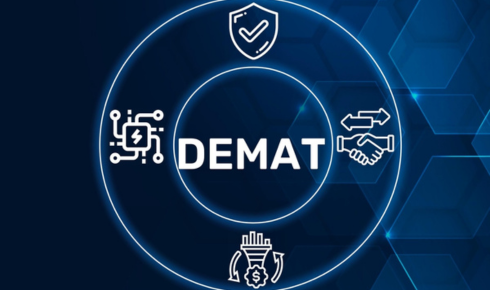The Indian financial markets have become an individual investor, trader, and institutional synecdoche; it’s imperative to have access to the right set of tools to participate in this market. In the journey of this endeavour, the two prominent things that form the core of the process are a Demat Account and a Trading Account. These two together become the gateway to buying, holding, and selling securities in a regulated, accessible manner.
Understanding the Demat Account
“Demat Account” is short for “Dematerialised Account”. It works like an attic or a digital locker where all securities, such as stocks, bonds, exchange-traded funds, and mutual fund units, are locked in electronically. Earlier, shares were issued in paper certificates that posed risks like theft, misplacement, and forgery. All these risks were cleared by dematerialisation and made transactions a seamless affair.
Understanding the Trading Account
While the Demat Account is for storage purposes, on the other hand, the Trading Account serves as the transaction medium. It is through the trading account that an investor can place their buy or sell orders in the stock market. A trading account connects with the stock exchanges like NSE or BSE and executes these buy orders in real time.
Every time an investor makes a trade, the trading account uses both a bank account and a demat:
The bank account funds the required amount.
The trading account executes the order.
The demat account receives the securities.
This makes a three-way link, thus enabling the involved participant to have a smooth investment cycle.
Why Both Are Needed
According to the requirements of the Indian market segment, both accounts have to be opened to function completely:
For instance, no trading can be done with just a Demat Account because it only holds securities.
Similarly, a trading account cannot hold shares after purchase.
Both together create a whole ecosystem in which one account guarantees custody while the other guarantees execution.
Basics of Trading How These Accounts Function
To learn these basics of trading, let us take one simple example. Suppose there is an investor who wants to buy 50 shares of a listed company:
Then the investor has to log into the trading account before placing the buy order.
The trading account relays this order to the exchange and waits for a match to execute.
Once matched and executed, funds will move from the corresponding bank account.
The purchased shares would be credited into the Demat Account.
The reverse would occur in a sale when shares are debited from the Demat Account with funds credited back into the bank account.
This cycle demonstrates that both accounts are necessary and serve complementary purposes in participation in the market of securities.
Steps to Open Your Demat & Trading Account in India
Opening of a Demat and trading account involves a laid-down structure, which is carried out by the depositories and regulated under the Securities and Exchange Board of India (SEBI). Steps to follow are as shown below:
1. Choose the Depository Participant (DP)
Depository participants are authorised intermediaries, such as banks, brokers, and financial institutions, that offer Demat Account services.
2. Filling the Application Form
The account opening form requires personal details, bank account information, and financial status. This ensures compliance with regulatory norms.
3. Submit KYC Documents
Proof of identity, proof of address, and income-related documents form part of the Know Your Customer (KYC) process. PAN (Permanent Account Number) is also needed for opening a Demat and Trading Account in India.
4. In-Person Verification
The DP may conduct verification through a video call or physical interaction to validate the information provided.
5. Sign the Agreement
An agreement outlines the investor’s rights and obligations along with the DP’s responsibilities. This creates transparency in the relationship.
6. Receive Login Credentials
Once the application is processed, the investor receives login credentials for both accounts. These credentials allow online access to place trades and monitor holdings.
Costs Involved
While opening a Demat and Trading Account, there are some charges that an investor should bear in mind:
Account opening charges: Some DPs may levy an opening amount cost.
Annual maintenance charges (AMC): A yearly statutory fee for the maintenance of the Demat Account.
Transaction or entry charges: Applied when securities are credited or debited.
Broking charges: Costs incurred when making buy or sell orders through the trading account.
Understanding these costs forms a major part of the trading basics. It would aid in differentiating factors that would help an investor make informed decisions about service providers and trading strategies.
Advantages of Demat and Trading Accounts
Some of the benefits that opening either of these accounts assures to Indian investors include the following:
Security: Securities are stored in electronic form, thus lessening the risks involved with physical certificates. Convenience: Online access allows trading and monitoring from anywhere.
Faster settlements: Trades are often settled quickly, like T+1 or T+2 days.
Diverse instruments: The accounts enable access to equities, debt instruments, mutual funds, and ETFs.
These advantages are in accord with the growing demand for efficiency and transparency in financial markets.
Conclusion
In India, using the securities market starts with two steps: opening a Demat Account and a trading account. Essentially, the Demat Account secures the holding in digital form, while the Trading Account performs the function of the international stock exchange transaction. These two jointly establish the foundation for market participation for every investor.





